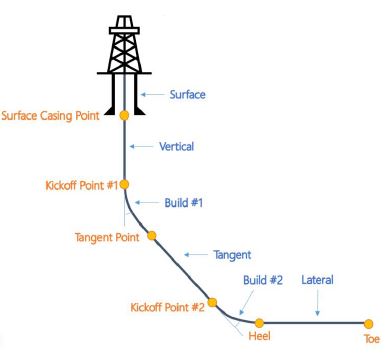Methodology & Definitions
Methodology
Data Confidentiality
The majority of data provided on this platform is sourced from non-confidential publicly available information. Wells may maintain confidentiality status between 2 and 36 months depending on the well license application, as per AER Directive 056 and BCOGC Oil and Gas Activities Act. All other data is used with explicit permission by its owners.
Data Sources
Unsist's comprehensive database comprises of data from a number of external sources (such as AER, BCOGC and Bloomberg), and of data generated by Unsist's proprietary methods.
Data Process
Unsist delivers values to its users through a 4-step process:
- Data Acquisition: We collect large amounts of data from various resources
- Data Processing: We digitize unstructured files (PDF, TXT) and prepare datasets for standardized analysis
- Data Analytics: We run data analytics (see Business Model & Product section) to create a unique database of key indicators
- Data Discovery & Insights: We publish the data on our platform to allow the managers, engineers and investors to make better decisions, faster
Definitions
For convenience, we've compiled the list of definitions and methodologies used on our platform. For further reference, the Schlumberger Oilfield Glossary provides a comprehensive directory of industry terms.
Rig Move: The time from when rig move trucks mobilize to when they are released.
Rig Up & Pre-Spud: The total time spent on a well before spud, excluding rig move and including rig skid and rig up.
Rig Skid: The time taken for a rig to skid from one well to another on the same pad. Surface: Spud (100m, due to data cleanliness) to surface casing point.
Drilling Time Codes: Activities during the drilling operation are categorized into 25 time codes, enabling historical and statistical analysis. See CAODC Standard, Page 111.
CAODC Standard: The Canadian Association of Oilwell Drilling Contractors develops and maintains standards to give direction and support for the industry. The full standard for Electronic Tour Sheets can be found here.
Well License: License number provided by the regulator (BCOGC or AER) for all permit applications.
Spud Date: The date when drilling first begins.
Rig Release Date: The date when a drilling rig is released and project is complete.
Electronic Tour Sheet: A daily drilling report standardized and set by CAODC, used for government submission.
Directional Survey: A summary file of the well trajectory and geometry. See CAODC Standard
Connection: Time for a connection between joints or stands of drillpipe, downhole tools or casing. Tripping, running casing and reaming are assessed based on "Slip-to-Slip" times, while drilling connections also include "Weight-to-Weight" times.
Surface Casing Point: The measured depth at which casing was set within the surface hole.
Vertical (0-10°): Drillout surface cement to the first point that a well reaches 10° in inclination.
Tangent & Build (10-87°): Build inclination from the end of the vertical to landing the heel.
Lateral: The section of a well from landing the heel to the terminal depth of a well.
From Depth: The shallowest depth provided in the Electronic Tour Sheets, often ground level or after surface casing.
To Depth (TD): The deepest depth provided in the Electronic Tour Sheets, also known as the Terminal Depth (TD).
Heel Depth: The inflection point when the horizontal section of a well begins, approximated by determining when inclination first reaches 87°.
Measured Depth: The drilling depth along the trajectory of the well. Total Measured Depth refers to the Measured Depth at TD
Vertical Depth: The drilling depth of a well along the vertical axis. Total Vertical Depth refers to the Vertical Depth at TD.
Spud to Rig Release: The time between the Spud time and Rig Release time.
Operating Days: The time between the Spud time and Rig Release time, excluding Waiting On and Rig Watch activities. See Drilling Time Codes
On Bottom ROP: The ratio of the total meters drilled, and the total hours of drilling.
Directional Difficulty Index (DDI): A quantitative method for evaluating relative drilling difficulty based on well geometry, such as total vertical depth, total measured depth and tortuosity. See this publication by Schumberger in SPE 59196 here.
